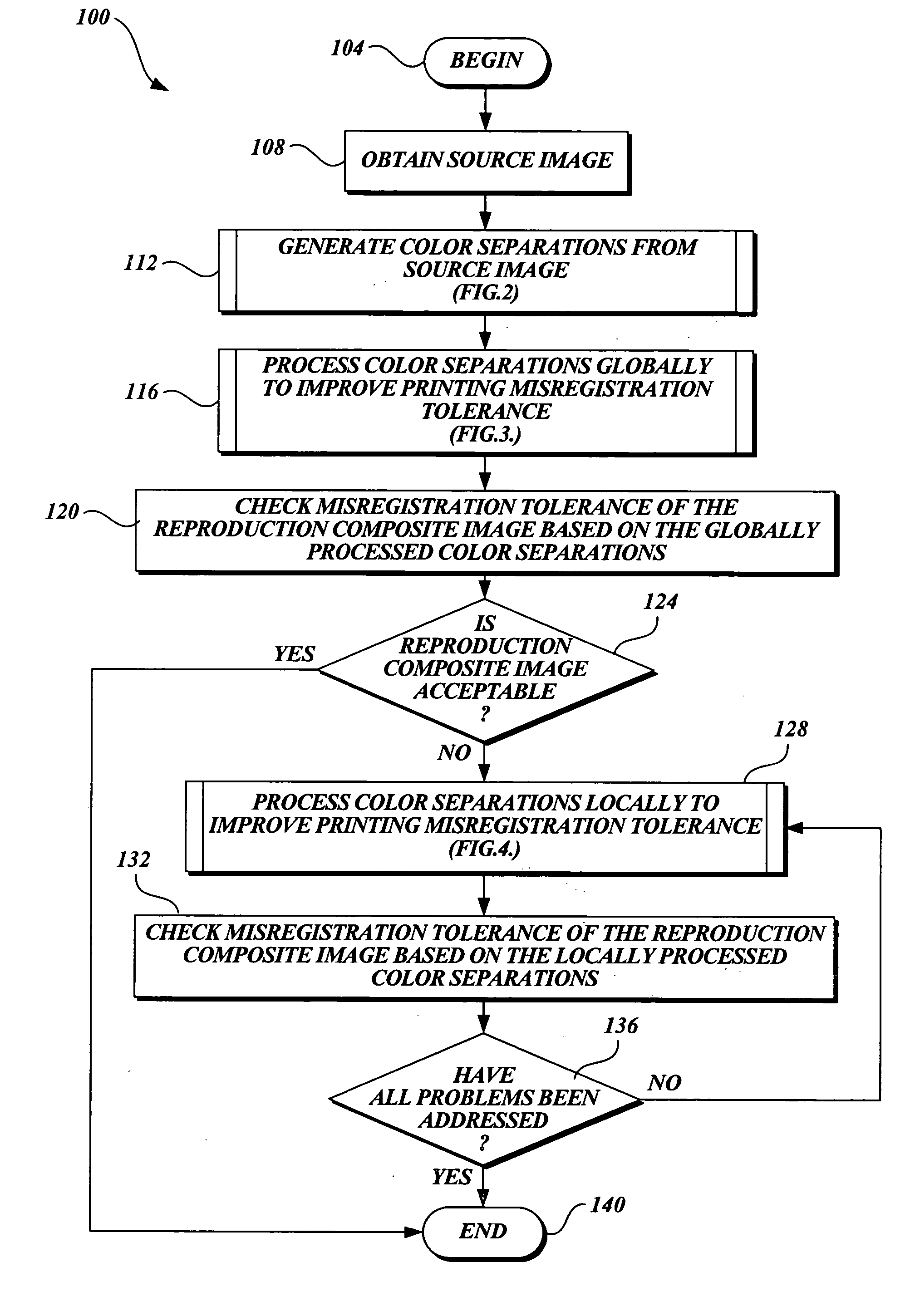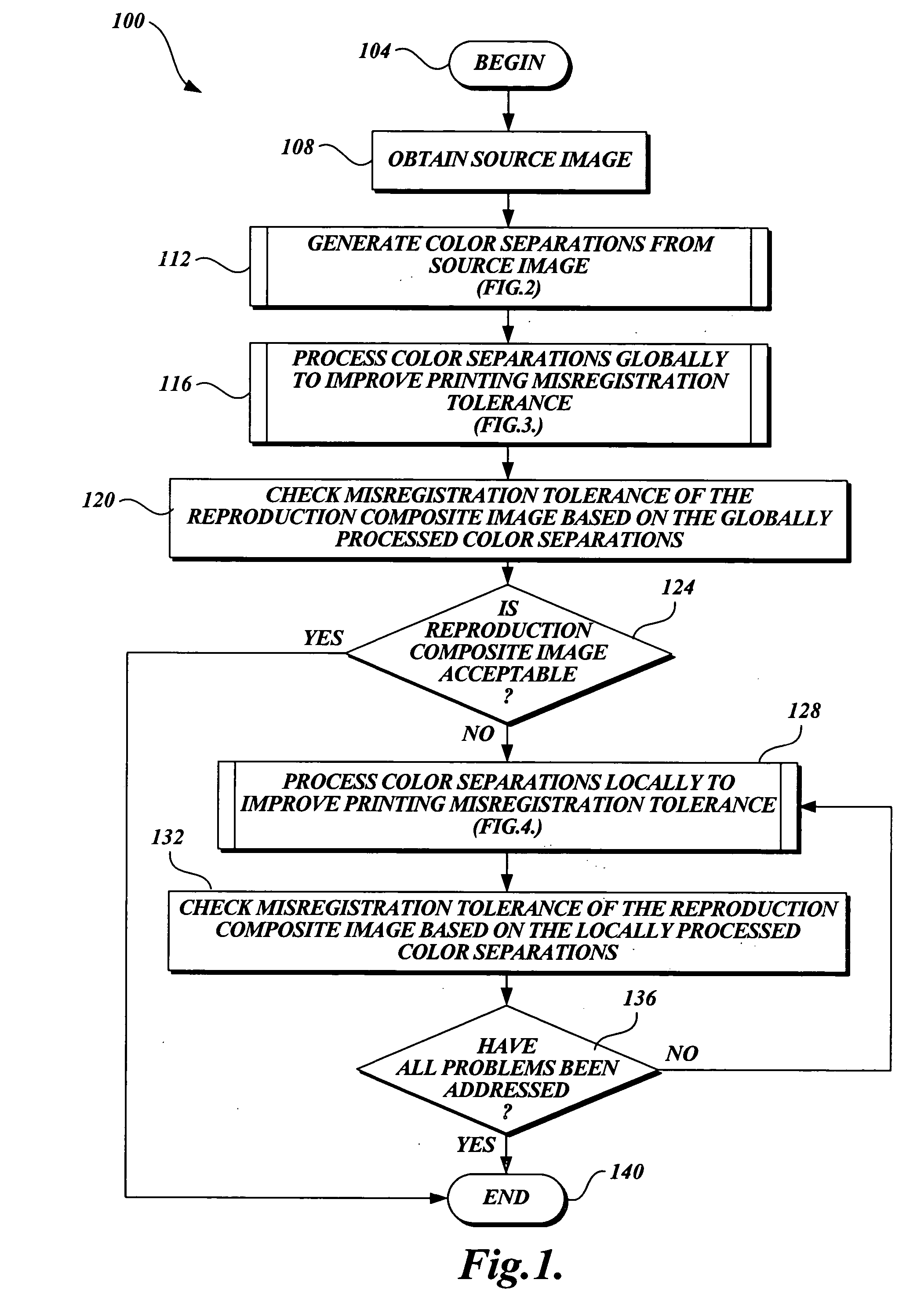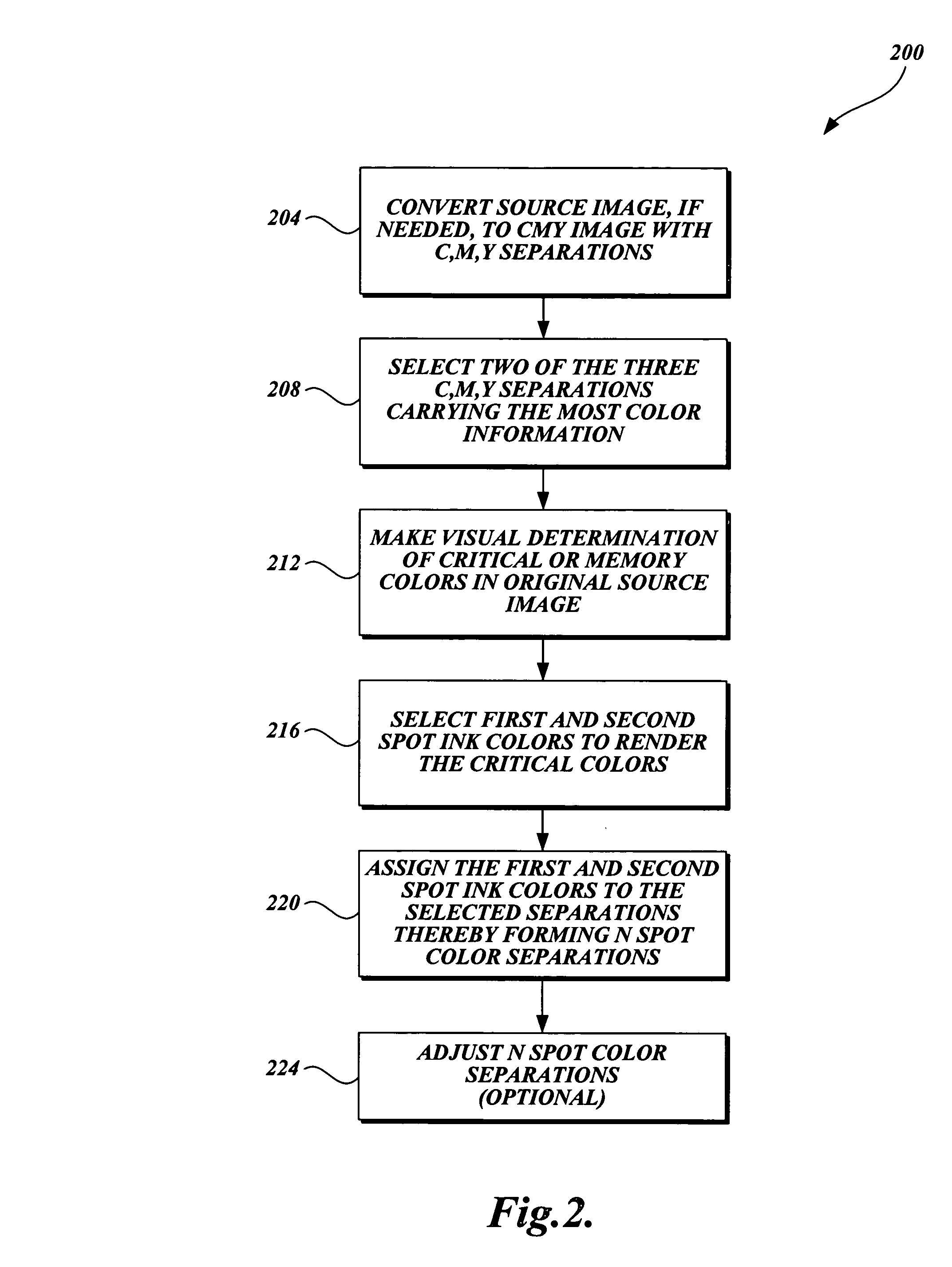Prepress workflow methods for generating images with improved misregistration tolerance utilizing global and/or local processing techniques
a workflow and workflow technology, applied in the field of prepress printing methods, can solve the problems of poor printing misregistration tolerance, muddy brown more often, and limited color illustration availability, and achieve the effects of enhancing image detail, and improving printing misregistration toleran
- Summary
- Abstract
- Description
- Claims
- Application Information
AI Technical Summary
Benefits of technology
Problems solved by technology
Method used
Image
Examples
Embodiment Construction
[0037] Embodiments of the present invention will now be described with reference to the accompanying drawings where like numerals correspond to like elements. Embodiments of the present invention are directed to image processing techniques for achieving misregistration tolerant reproduction composite images or improving the misregistration tolerance of the reproduction composite image when generated with either process or non-process color separations. The following description provides examples of a prepress workflow process that globally and / or locally processes color separations to improve misregistration tolerance of reproduction composite images; however, it should be apparent that these examples are only illustrative in nature and should not be considered as limiting the embodiments of the present invention, as claimed.
[0038] A. General Terms and Phrases
[0039] In the description that follows, terms such as “record”, “separation”, and “channels” will be to some extent be used...
PUM
 Login to View More
Login to View More Abstract
Description
Claims
Application Information
 Login to View More
Login to View More - R&D
- Intellectual Property
- Life Sciences
- Materials
- Tech Scout
- Unparalleled Data Quality
- Higher Quality Content
- 60% Fewer Hallucinations
Browse by: Latest US Patents, China's latest patents, Technical Efficacy Thesaurus, Application Domain, Technology Topic, Popular Technical Reports.
© 2025 PatSnap. All rights reserved.Legal|Privacy policy|Modern Slavery Act Transparency Statement|Sitemap|About US| Contact US: help@patsnap.com



